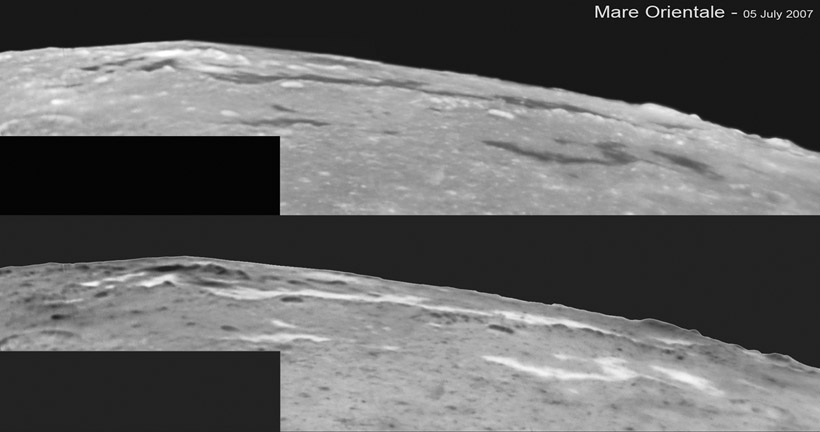
image by George Tarsoudis, Alexandroupolis, Greece
The ribbons of lava that hug the inner rings of the Imbrium Basin are easy to see when the Sun is high (and librations good). As George’s recent image shows the dark strips of lava contrast well with the general gray ruggedness and the whiteness of mountains that brightly reflect Sunlight. The lower image - which inverts brightness and darkness - makes the lavas appear to float above the surface, almost like they had been poured across the terrain. And of course, that is exactly what happened, except the pouring came out of the ground, up the fractures associated with massive faults that bound each ring. The bright peaks and ridges that appear in the upper image are part of the Rook Mountains but none has an individual name. Some are probably the Greek-lettered features labelled by Schröter and Mädler, but exactly which peaks they meant are hard to identify with certainty. But now we can clearly describe Orientale’s landmark peaks, and just as the Apennines have named mountains such as Wolf, Huygens, Bradley and Hadley, these cry out for names.
Technical Details:
July 5, 2007. Orion Optics 250mm at f/6.3 with LXD-75 mount, DMK 21AF04 at barlow projection method, barlow 5X, filter IR pass. 4 images at f/43.63
Related Links:
Rükl plate 50 and VII
George’s website
Orientale in the-Moon Wiki
Now you can support LPOD when you buy ANY book from Amazon thru LPOD
COMMENTS?
Register, and click on the Discussion tab at the top of the page.



